The Fauna Conservation Department commenced the Wild Snake Rescue Project in 1999 to mitigate human-snake conflict by providing an end point for snakes captured following Police call outs in Hong Kong. The Project is a partnership with the Agriculture, Fisheries & Conservation Department (AFCD) and the HKSAR Police. This ongoing project helps in the mitigation of human-snake conflicts in Hong Kong. The semi-natural habitats (sub-tropical secondary forest and lowland wetland) in Hong Kong SAR support diverse snake fauna and the incidence of snakes straying into human habitation is fairly high in Hong Kong. This is due to high human densities close to natural areas, encroachment of wild habitats and the existence of a fairly robust snake population in these habitats.
By 2019, the rescue professionals at the Wild Animal Rescue Centre of KFBG had processed over 14,000 snakes. These were mostly received from the Police force following capture by a local ‘seh wong’ (snake catcher) and subsequently delivered to KFBG in a specially designed transport and holding box and bag, to ensure staff safety and the wellbeing of the rescued snakes.
Health checks are carried out for all snakes soon after their arrival at KFBG, to discover whether any injuries were sustained before or during capture that needed attention. Most of the snakes were found to be healthy and were released back to the wild in Country Parks, and other wilderness areas, away from human habitation soon after being received, so as to minimize their stress.
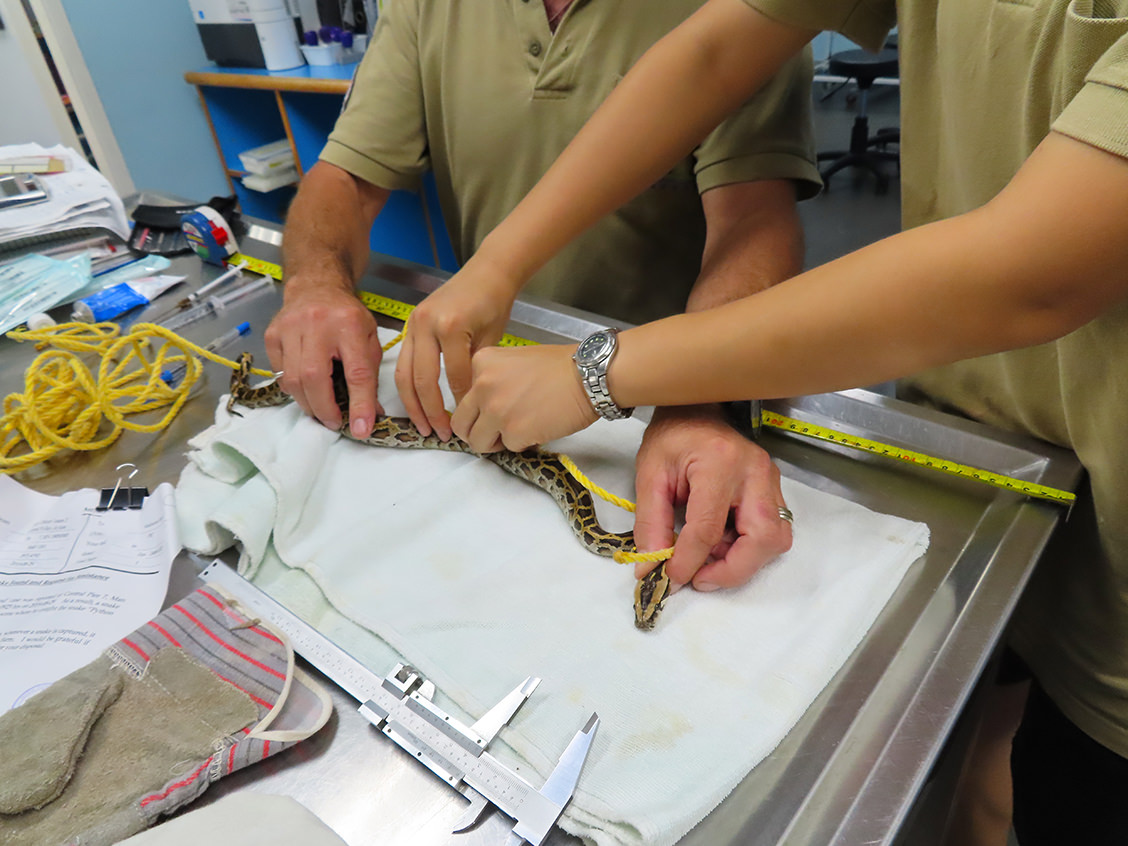
Native Burmese Python's body length being measured by the Rescue Team - Non-Venomous
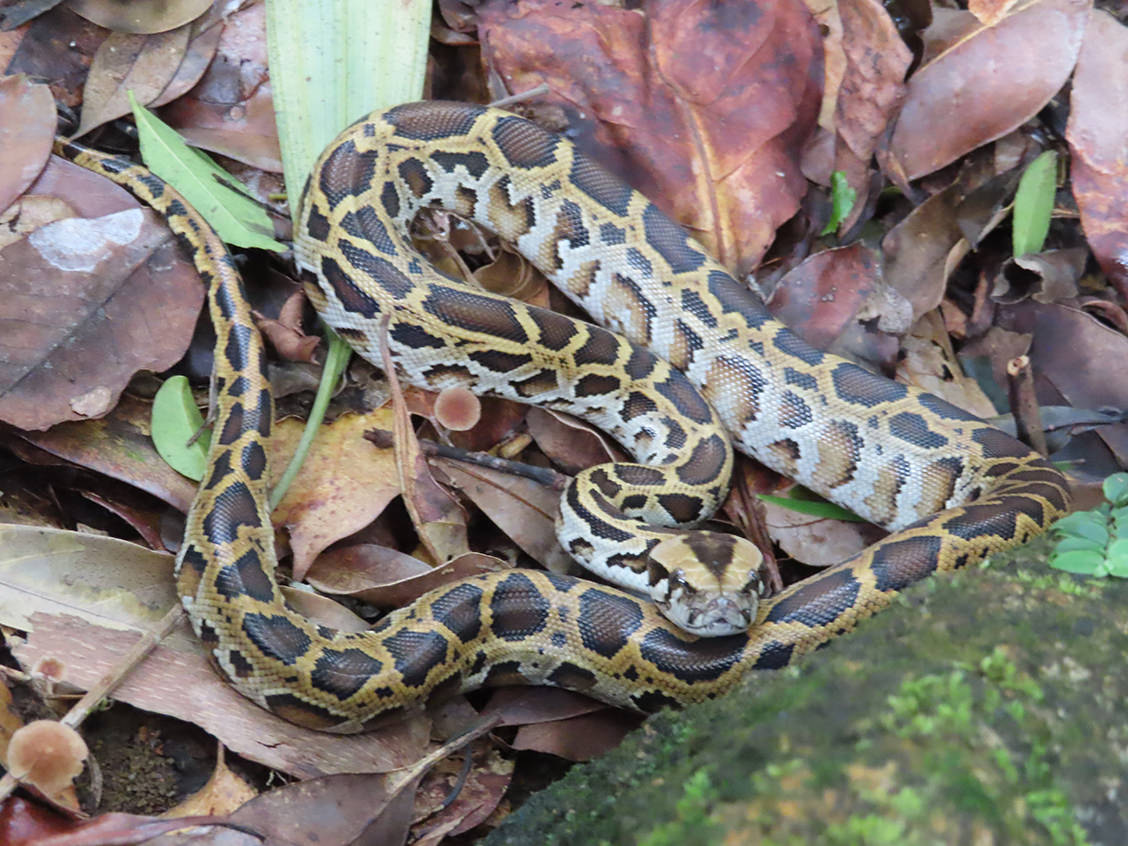
A Burmese Python rests in a Country Park following release
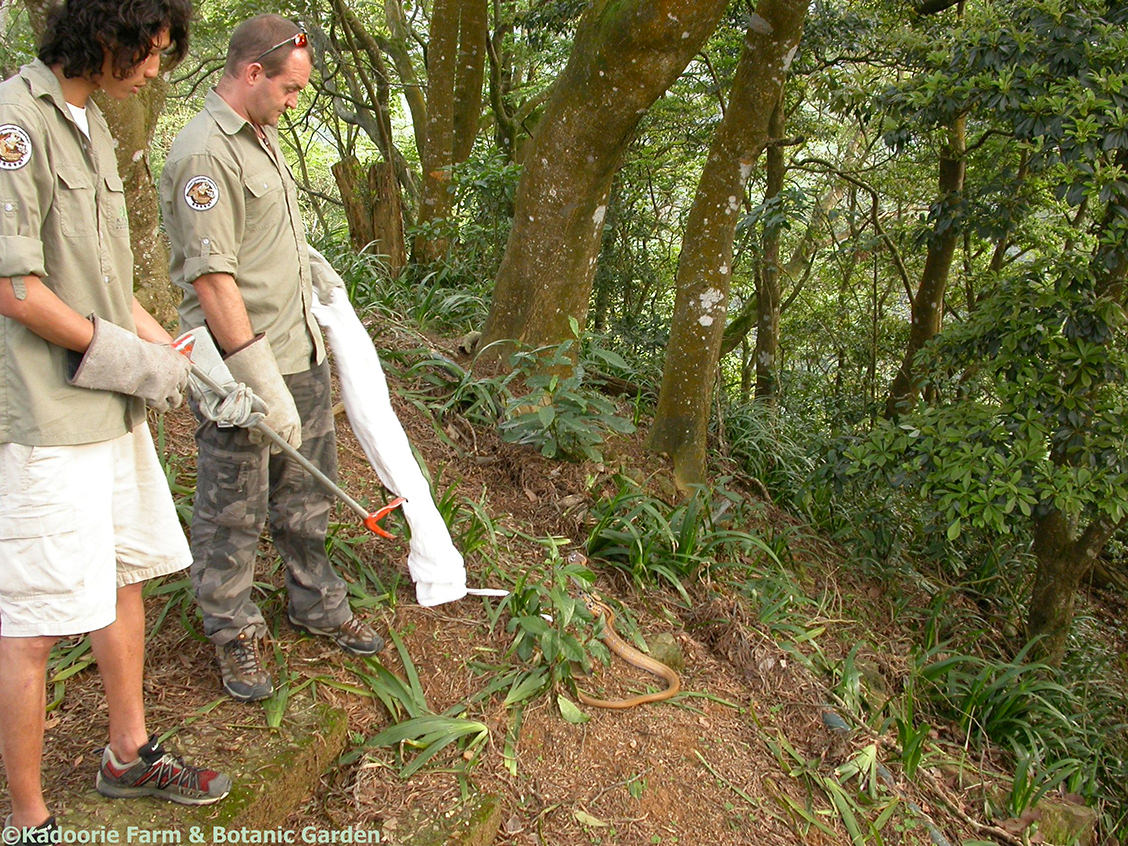
Harmless Copper headed Racer released in the Country Park - Non-Venomous
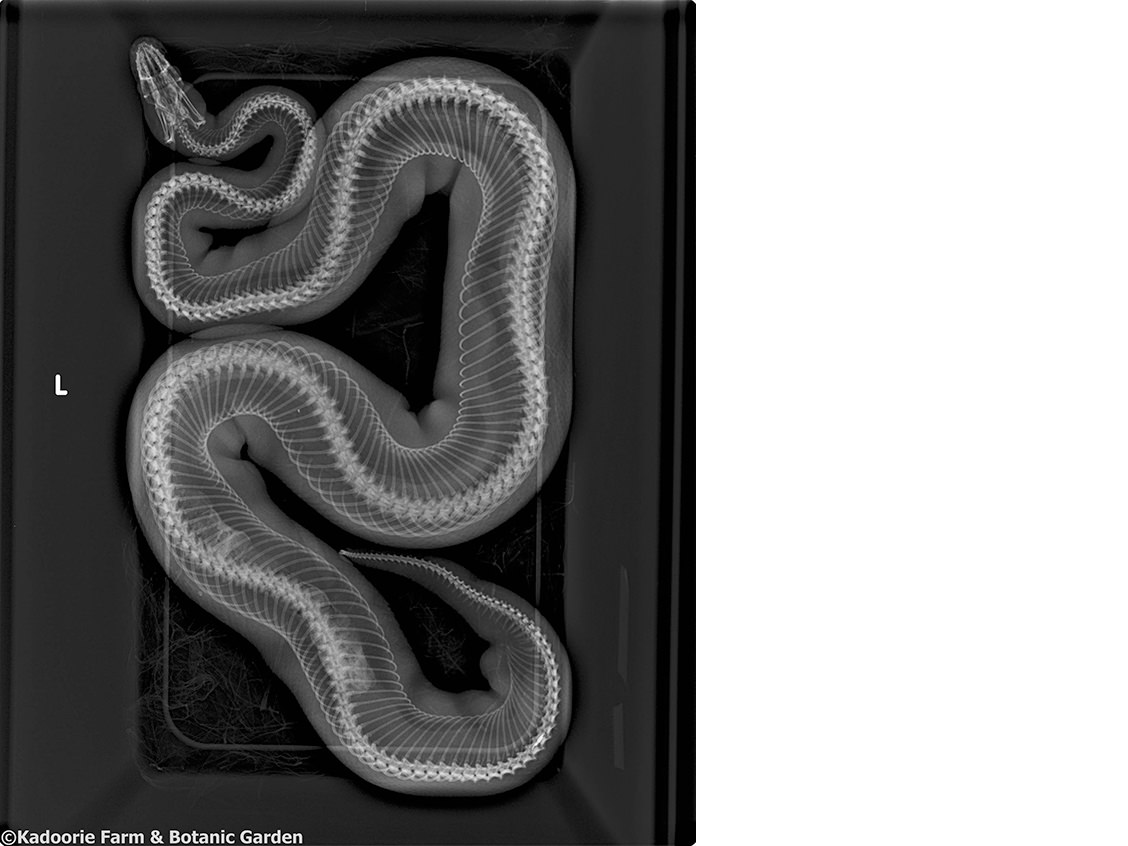
Python X-rayed during its health check
Snakes perform important predatory functions in the complex web of nature, controlling pest rodents and even eating other snakes. They themselves are predated by birds of prey and other carnivores, thus providing those animals with food. To maintain a balanced and healthy ecosystem it is important that a re-release programme exists. I Hong Kong has several ‘regionally-threatened’ snakes among the 53 local species, and the release of rare species is an important step in conserving the wild populations.
Although we recognize that not all snakes will necessarily survive after being relocated, there is sparse conclusive evidence to suggest that the wide range of species we deal with will not survive. So, we would prefer to give the snakes their chance of life, to which they have a right, rather than revert to the previous practice that resulted in all captured individuals being sent into the food trade. We would also prefer to avoid an alternative approach that might see hundreds of healthy snakes each year being unnecessarily destroyed.
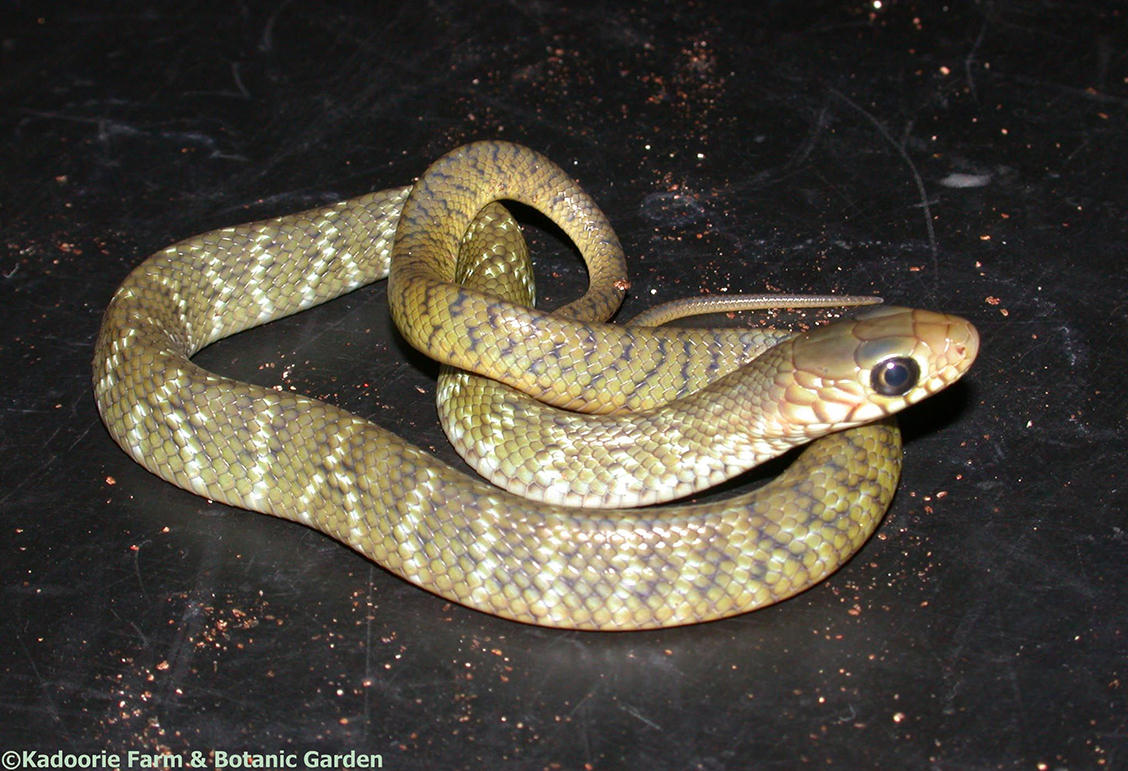
Common Rat Snake commonly received by the conflict mitigation project - Non-Venomous
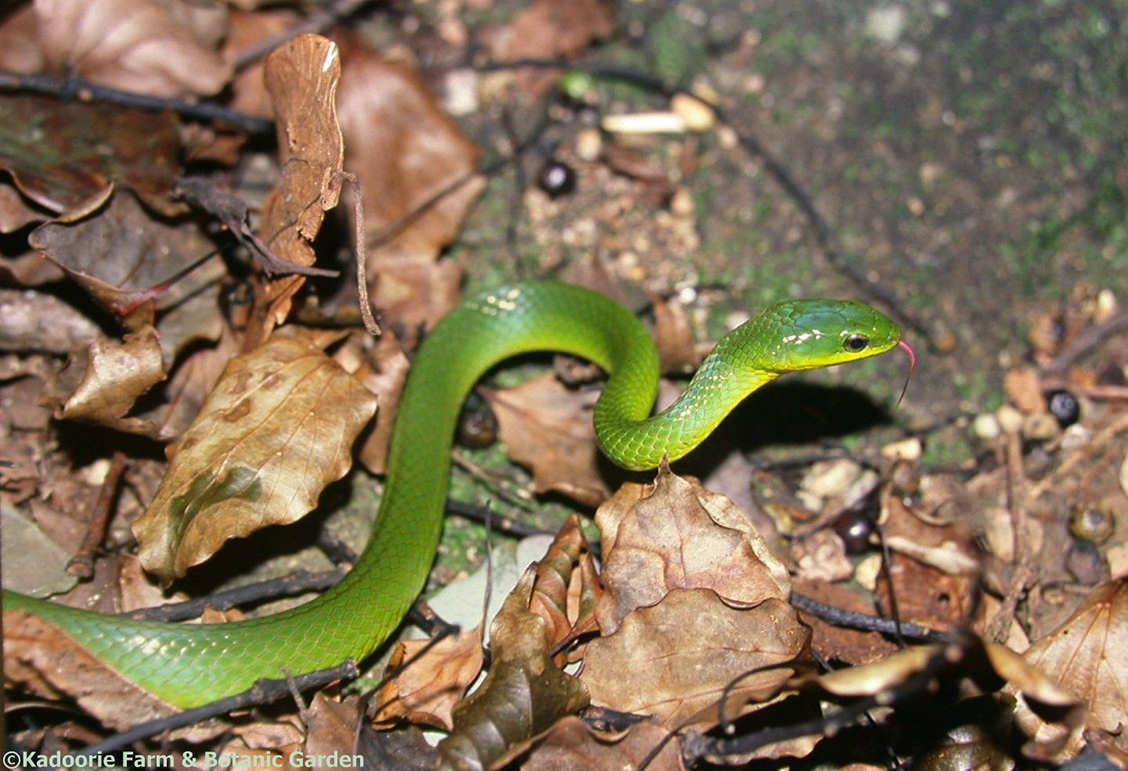
Greater Green Snake a harmless worm-eating snake - Non-Venomous
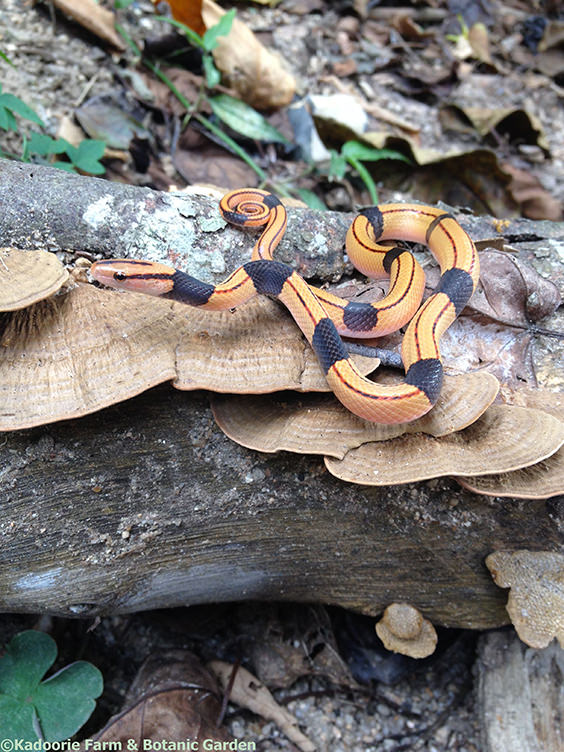
Red Mountain Racer a rare species which occasionally gets delivered by the HKSAR Police - Non-Venomous
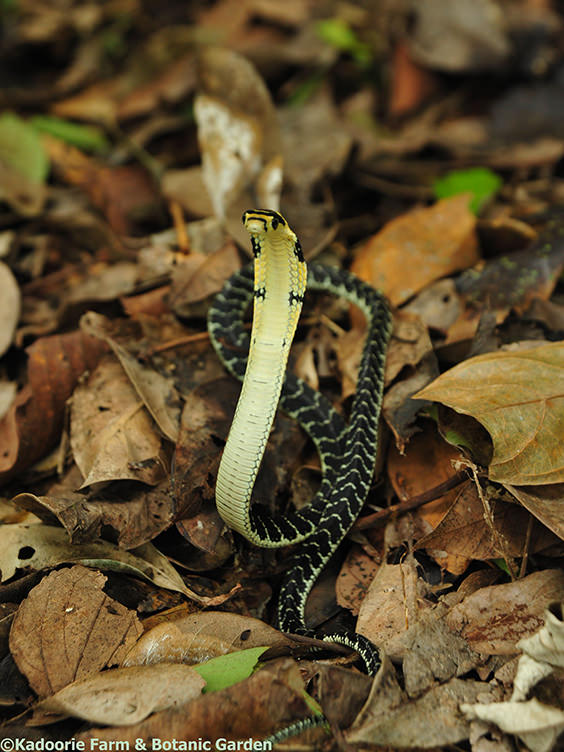
A juvenile King Cobra a rare but beautiful rescue case - Venomous
Scientists can monitor the survival of snakes and other animals through radio-tracking studies, which help to show what the animal does after being released and whether it feeds and survives. There is still plenty of room for more of these studies in Hong Kong as there are many gaps in knowledge that need to be filled. We encourage such studies and when opportunities become available, we have and will continue to collaborate with the AFCD and local Universities in order to build up more knowledge related to local biodiversity that may help guide us in developing the rescue and release process further.
KFBG carried out a post-release snake study, in collaboration with the AFCD, in 2014. This involved the post-release monitoring of 3 Burmese Pythons. Two of the three relocated pythons survived during the entire term of study which was 6 months and, because of this, we expect they could still be alive today. The survivors adopted home ranges in their release areas that were between 0.60 Km² and 0.99 Km² and neither moved further than 1.4 Km from the translocated release site.
In 2012 KFBG collaborated with a Hong Kong University study of the post-release monitoring of the Bamboo Pit Viper. This study suggests that adult Bamboo Pit Vipers do not do well when released in new sites.
Both studies included fairly small sample sizes but at least suggested that different species of snakes may adapt very differently once relocated. More studies are needed to determine how different snake species are able to adapt to relocation after capture.
We also receive many exotic (not native to Hong Kong) species, which are most likely escaped pets or smuggled snakes. If such a snake is healthy, we will try to rehome it with the assistance of the SPCA and Hong Kong Society of Herpetology Foundation. For venomous exotic species we will generally euthanize the snakes as these can present a serious safety and health risk, they cannot be released in Hong Kong and cannot be repatriated, fortunately numbers in this category are small (< 10 a year).
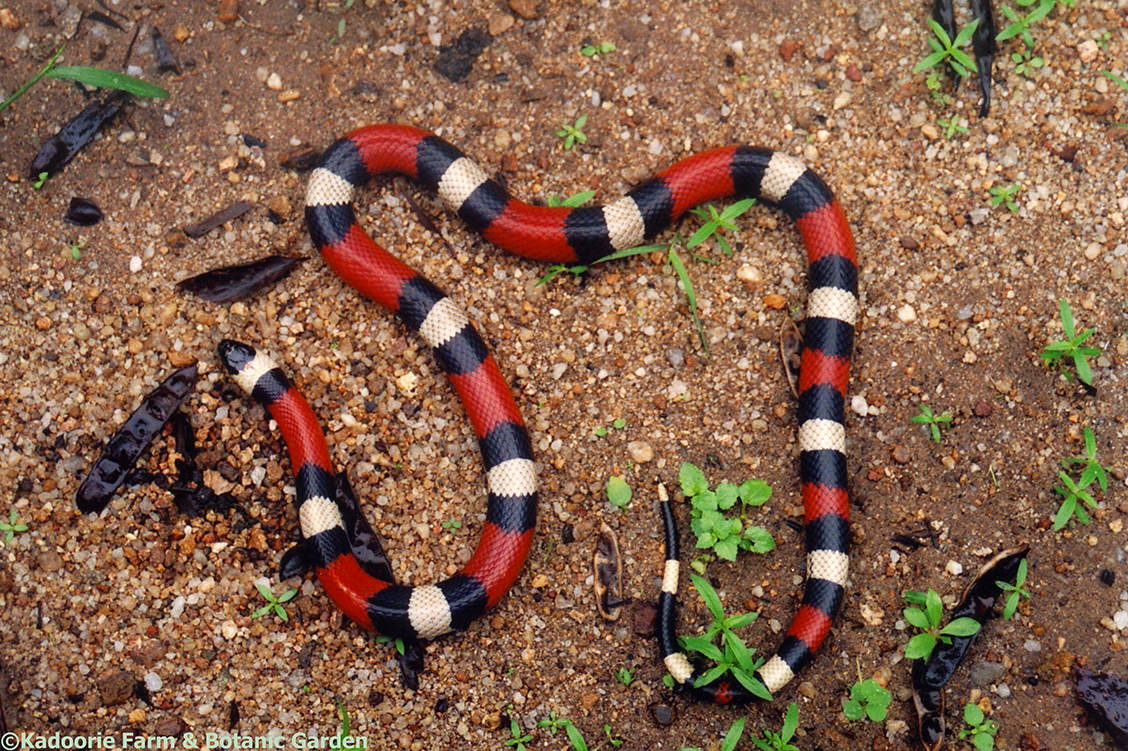
A Milk Snake one of the exotic pet trade species commonly received by the project - Non-Venomous
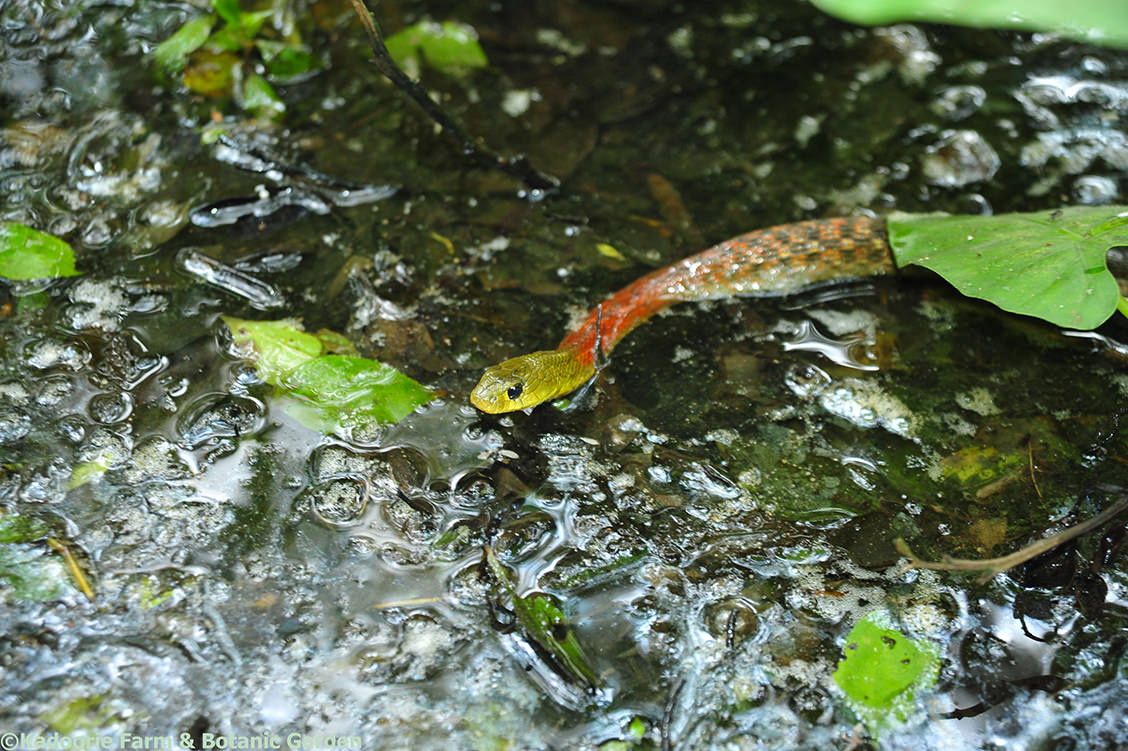
Red-necked Keelback a widespread species often received by the project - Venomous
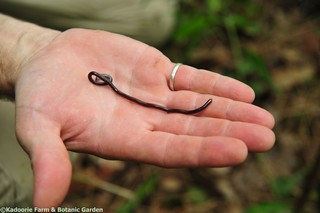
Common Blind Snake one of HK's smallest snakes occasionally received by the snake rescue programme - Non-Venomous
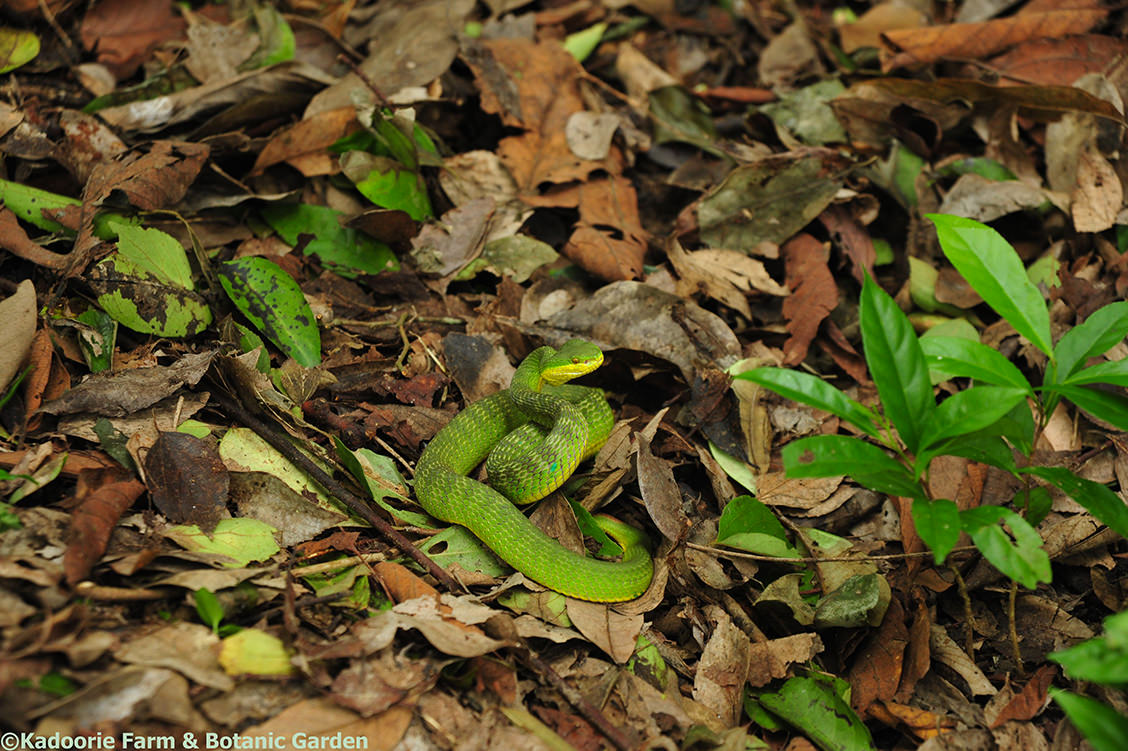
An adult Bamboo Pit Viper which feeds on rats and frogs - Venomous
The wildlife care team at KFBG will continue to play their role in conserving the local snakes and work with AFCD and the HK Police force in mitigating this human – snake conflict. We would prefer that snakes were left alone and not removed from the wild unless it is necessary for safety. Clearly better education of citizens living in and using Hong Kong’s rural areas might help to prevent some of the ‘emergency’ calls that result in the police delivering small harmless species that could have been left alone.
However, the collaboration of the AFCD, the Police and KFBG has successfully resolved many cases where the public faced a potential safety risk, such as venomous cobras in gardens or houses. Those cobras are not euthanized, they are released far from human activity as are healthy Burmese pythons.
We will keep looking for opportunities to collaborate with local and overseas Universities regarding snake relocation studies and encourage local students to pursue these research topics, which will also help to guide such project work. We also continue to provide a 24-hour service for the Hospital Authority doctors regarding the identification of snakes for snake bite victim treatment cases.
If you need advice regarding snake issues or would like to have a close encounter experience with a real live, non-venomous snake you can contact fauna@kfbg.org or 2483 7200 for further information.
And some advice
- https://www.kfbg.org/en/KFBG-blog/post/What-to-do-if-you-encounter-a-wild-snake
- Think twice before calling 999 to deal with snake conflict issues. Is the snake really causing a threat?
- If you back off, wait a while and give the snake space it may solve the immediate conflict itself by moving away.
- Please do not attack any snake - this may cause the snake to instinctively defend itself.
For a photo directory of Hong Kong’s snakes please click here.
“LET’S TRY TO LIVE IN HARMONY WITH NATURE AND ENJOY SPECIAL MOMENTS AND ENCOUNTERS WITH WILDLIFE.”
Dr. Gary WJ Ades
Head of the Fauna Conservation Department, KFBG

